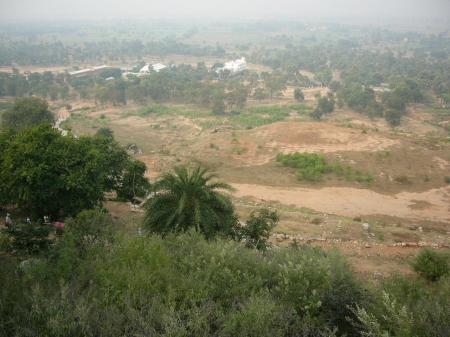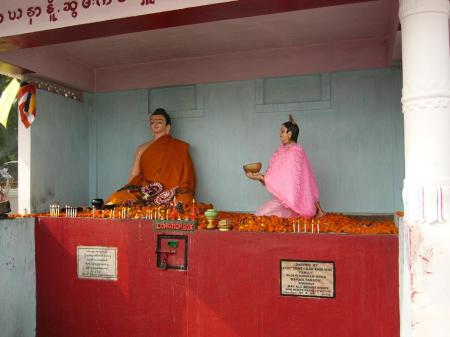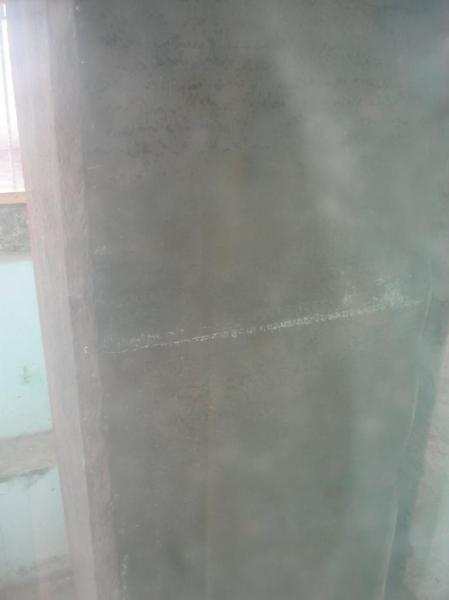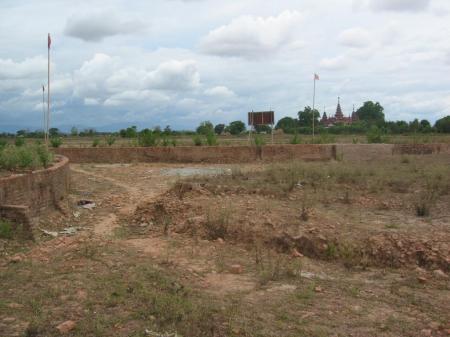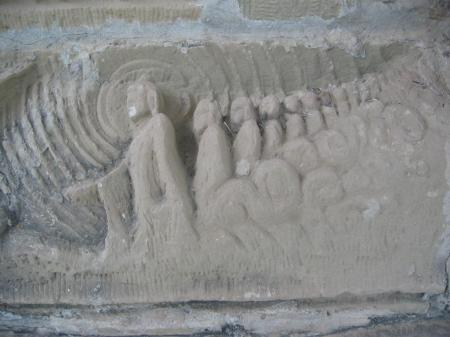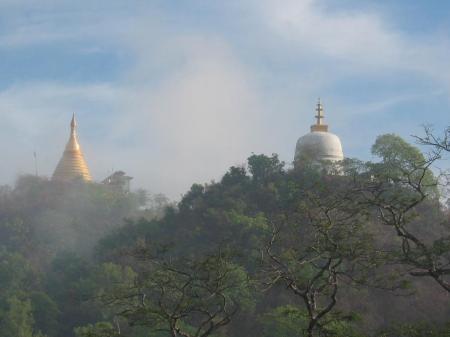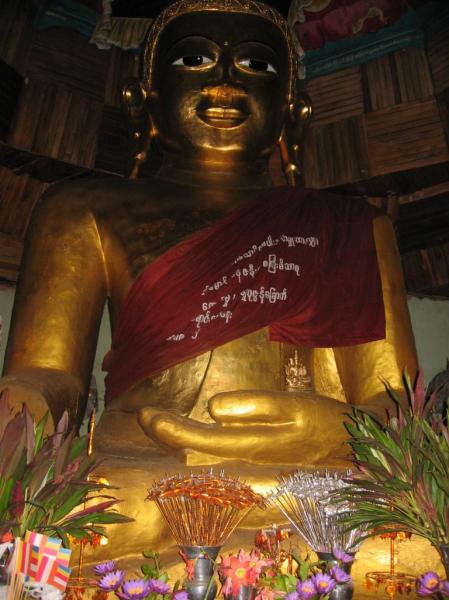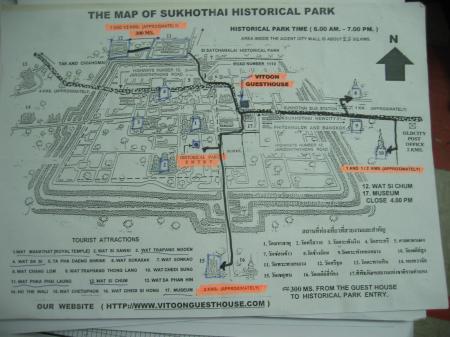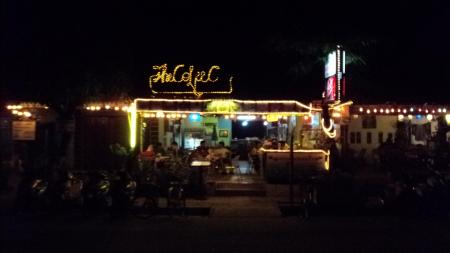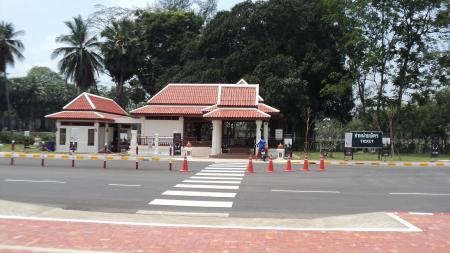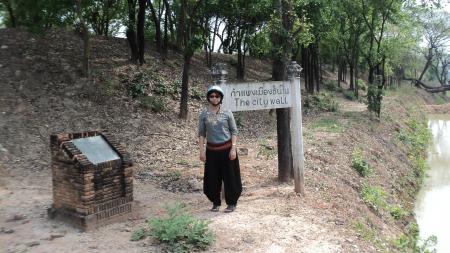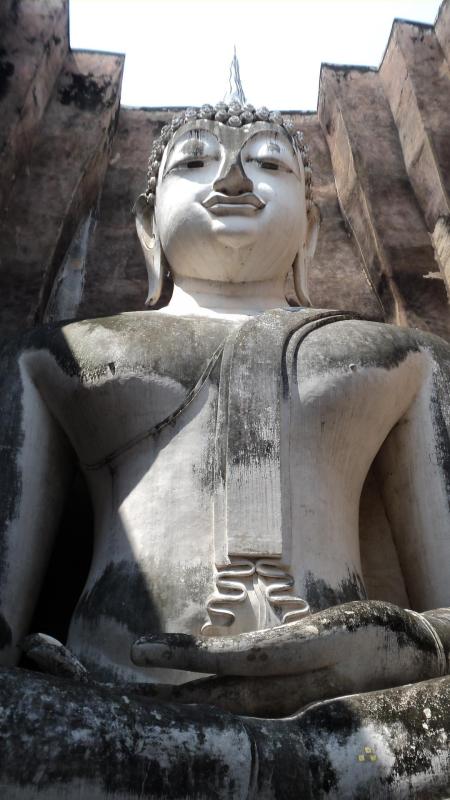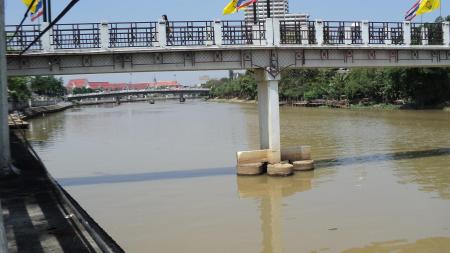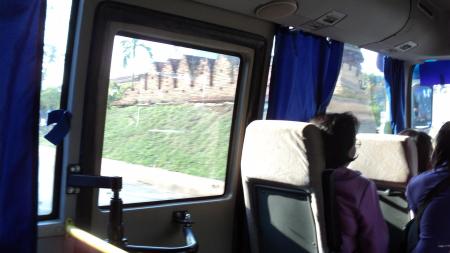Ko Ko Gyi wrote: “Buddha Gautama underwent prolonged fasting, breath-holding, and exposure to pain. He almost starved himself to death in the process. He realized that he had taken this kind of practice to its limit, and had not put an end to suffering. So in a pivotal moment he accepted milk and rice from a village girl and changed his approach. He devoted himself to anapanasati meditation, through which he discovered what Buddhists call the Middle Way (Skt. madhyamā-pratipad: a path of moderation between the extremes of self-indulgence and self-mortification. Wikipedia”
This version of the timing of the discovery of the Middle Way, after meeting Sujata is different from what I know. I looked up in Wikipedia and found:
According to the early Buddhist texts,[35] after realizing that meditative jhana was the right path to awakening, but that extreme asceticism didn’t work, Gautama discovered what Buddhists call the Middle Way[35]—a path of moderation away from the extremes of self-indulgence and self-mortification.[35] In a famous incident, after becoming starved and weakened, he is said to have accepted milk and rice pudding from a village girl named Sujata.[36] Such was his emaciated appearance that she wrongly believed him to be a spirit that had granted her a wish.[36]
This version of the meeting with Sujata is also different from what I know.
In BaJi U Ba Kyi’s portrayal of the offering of the rice milk to the would be Buddha, He was not portrayed as an emaciated being, but with well fed features.
The distance from the U-Ru WaiLa DukkaraSaRiYar mountain ridge to the place of offering of the rice milk is not near and it is unlikely that He met Sujata before he discovered the Middle Way.
These led me to look for more data on the internet. There, I found data that backs both the Wikipedia version and the version I know.
I googled “Sujata and the rice milk offering”.
Here are the results of the google search, including my blog in the 5th place:
· Sujata
When she had obtained what she wished for, she cooked the milk rice as an offering in thanks. Before the day she was to cook the rice, Sujata had some of …
http://www.angelfire.com/electronic/awakening101/sujata.html – Cached – Similar
►
· Life of Buddha: The Golden Bowl (Part One)
Sujata too was happy and excited and danced with joy with the servant. They then took even more pains to prepare the milk–rice, pouring it into a golden …
http://www.buddhanet.net/e-learning/buddhism/lifebuddha/15lbud.htm – Cached
· Abandonment of Asceticism – Buddhist World Portal Site, Buddhism …
Sujata’s Offering of Rice Milk Porridge … Sujata had uttered a wish to a Banyan Tree, and vowed a yearly offering to it if she should have a son. …
eng.buddhapia.com/_service/buddhapia/…/default.asp?… – Cached
· The_Buddha : Message: The offering of Ghana milk–rice by Sujata
25 Apr 2003 … The offering of Ghana milk–rice by Sujata. After dreaming the Five Great Dreams and having himself interpreted their meaning, the Bodhisatta …
groups.yahoo.com/group/The_Buddha/message/51 – Cached
· In the footsteps of Buddha: Sujata / Thu.ZarTar Places and the …
12 Jan 2011 … In the footsteps of Buddha: Sujata / Thu.ZarTar Places and the Grass temple. By nyiwin. at the Sujata / Thu.zarTar milk rice offering pagoda …
nyiwin.wordpress.com/…/in-the-footsteps-of-buddha-sujata-thu-zartar-places-and-the-grass-temple/ – Cached
· Hindi movie Sujata Video (Place where Sujata offered milk rice …
Watch Hindi movie Sujata Video Place where Sujata offered milk rice milk porridge to the future Lord Buddha.
http://www.moovyshoovy.com/…Sujata/…Sujata…milk–rice–milk…/vid_ID=4icoearY2q_ – Cached
· · Place where Sujata offered milk–rice (milk-porridge) to the future … |
|
| 5 min – 25 Feb 2009 – Uploaded by isharak About Sujata ignca.nic.in http://www.sacred-texts.com http://www.youtube.com/watch?v=_q2Yraeoci4 |
|
More videos for Sujata and the rice milk offering »
· Jataka Stories – Sujata
Last in the list is Gotama Buddha, who accepted the milk–rice from Sujata. Sujata offering milk–rice to the Buddha and the slave girl Punna is watching …
http://www.ignca.nic.in › … › Jataka Stories – Cached – Similar
· Sujata , Jatak Stories , Buddhism
19 Jan 2011 … A woman, named Sujata fulfilled his desire by offering him the milk–rice. Sujata was the daughter of the landowner of the Senani village …
http://www.indianetzone.com › … › Buddhism › Jataka – Cached – Similar
- [PDF]
Laywoman Sujata
File Format: PDF/Adobe Acrobat – Quick View
1 it is she who gives the Buddha the offering of milk–rice that marks the … Sujata, however, has no idea that she is making an offering to the …
http://www.sjsu.edu/people/shantanu.phukan/…/Strong-Laywoman%20Sujata.pdf
Here are relevant extracts
| Abandonment of Asceticism |
At this time there lived at Uruvela a house-holder by name Senani. Sujata was his daughter
Sujata came and offered Gautama the food prepared by her in a golden bowl.
He took the bowl to the river bank, bathed at a ford or a bathing place called Suppatitthita and ate the food.
Thus ended his trial of asceticism.
The five ascetics who were with Gautama became angry with him for having given up the life of austerity and self-mortification and in disgust left him.
Life of the Buddha (Part One) 15. The Golden Bowl
http://www.buddhanet.net/e-learning/buddhism/lifebuddha/15lbud.htm
Taking the delicious milk-rice both of them went to the banyan tree and Sujata saw what she perceived to be a holy man. He was handsome and golden looking and sat serenely in meditation. She did not know that he was in fact Ascetic Gotama. She bowed with respect and said, “Lord, accept my donation of milk-rice. May you be successful in obtaining your wishes as I have been.”
Ascetic Gotama ate the sweet thick milk-rice and then bathed in the river Neranjara. This was the last food and bath he would have for seven weeks.
When he finished he took the golden bowl and threw it in the river, saying, “If I am to succeed in becoming a Buddha today, let this bowl go upstream, but if not, let it go downstream.” The golden bowl went upstream, all the while keeping in the middle of the river.
SUJATA
http://www.angelfire.com/electronic/awakening101/sujata.html
Look up at the url for the 2 of BaJi U Ba Kyi’s Buddha drawings.
From the day the Great Being had gone forth from the household life until the day depicted in this picture, six years had elapsed. Here he has resumed eating normal food and his body has returned to a normal state. This day was the fifteenth of the waxing moon of the sixth lunar month, 45 years before the Buddha’s passing away [parinibbana].
The lady offering things to the Great Being in the picture is Sujata. She was the daughter of a householder in a village in Uruvela Senanigama. She is offering a dish of Rice Gruel with Milk [madhupayasa], rice cooked with pure cow’s milk. It was a vegetarian food, containing no meat or fish, used especially as an offering to deities.
When the rice was cooked, Sujata sent a servant girl to clean up the area around the banyan tree. The servant girl came back to Sujata with a report that the deity [deva] who was to receive the offerings had materialized, and was already sitting at the foot of the banyan tree. Excited, Sujata lifted the tray of milk rice to her head and carried it to the banyan tree, together with her servant girl. Seeing that it was as her servant had told her, she came forward and proffered the tray of milk rice. The Great Being received it and looked at Sujata. She understood from his look that he had no bowl or any other dish with which to eat the food, and so she made an offering of both the rice and the dish.
Having offered the rice, she walked back to her house, full of happiness, believing that she had made offerings to a deva.
A SECOND VERSION:
Early on the full moon day of Kason (April) in the year 103 of the Great Era, i.e. 2551 years ago, counting back from the year 1324 of the Burmese Era, the now emaciated prince sat down under the Bo Tree near the big village of Senanigãma awaiting the hour of going for alms food. At that time, Sujãtã, the daughter of a rich man from the village, was making preparations to give an offering to the tree-spirit of the Bo tree. She sent her maid ahead to tidy up the area under the spread of the holy tree. At the sight of the starving man seated under the tree, the maid thought the deity had made himself visible to receive their offering in person. She ran back in great excitement to inform her mistress.
Sujãtã put the milk rice which she had cooked early in the morning in a golden bowl worth a hundred thousand pieces of money. She covered the same with another golden bowl. She then proceeded with the bowls to the foot of the banyan tree where the prince remained seated and put the bowls in the hand of the soon to be Great Bodhisattva, saying, “May your wishes prosper like mine have.” So saying, she departed.
Conclusion
It is not for me to say which version is the correct one.
Whether Buddha ended the Extreme asceticism at the time of meeting with Sujata or whether it was ended earlier in the U-RuWaiLa forest near the DukkaraSaRiYar cave and the would be Buddha met Sujata on His way to the Aung Myay, Gaya, which is on the other side of the Narinjara Nadi / river and had Sujata’s milk porridge as His last meal before Enlightenment.
I think the 2 versions will never be settled as there is no existing direct contemporary evidence.
Most will know of only one version unless they come to hear or read about the other version.

